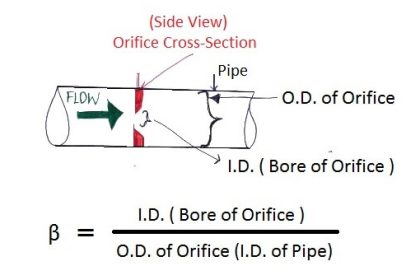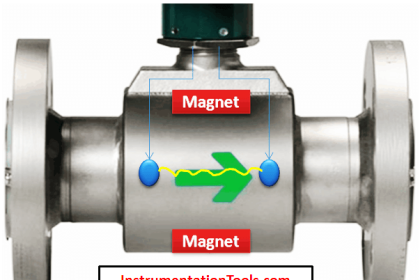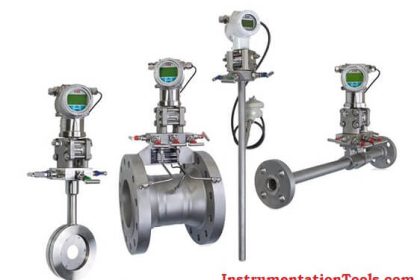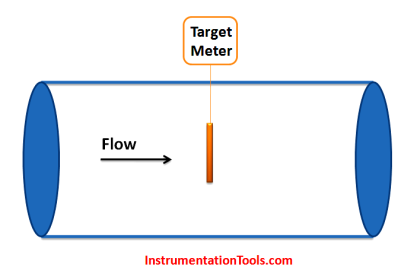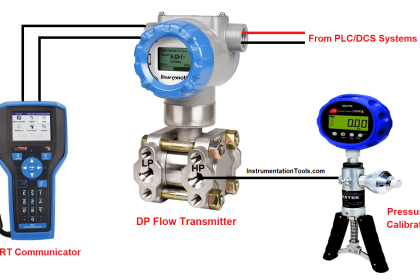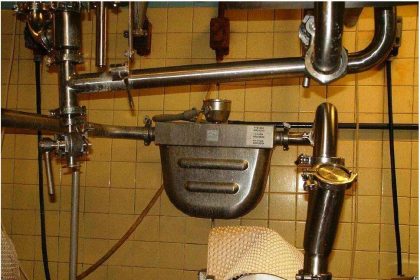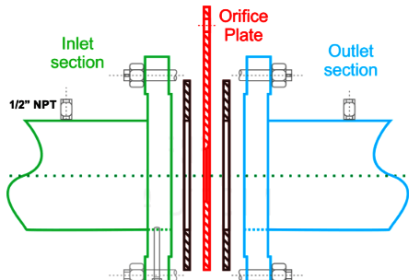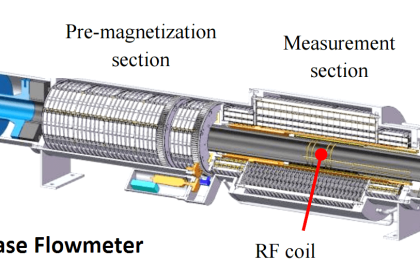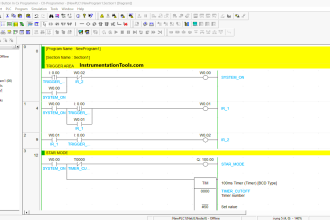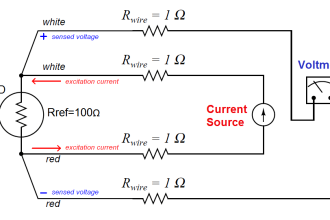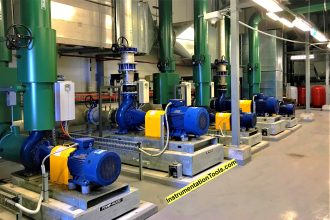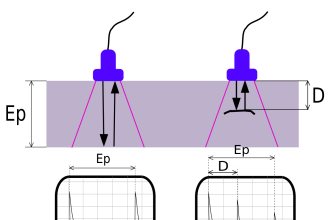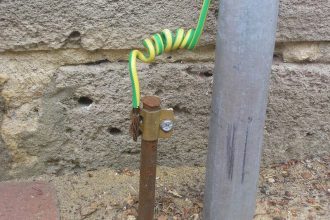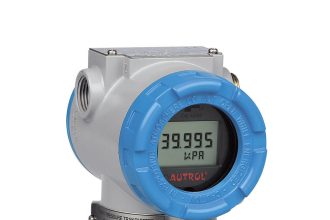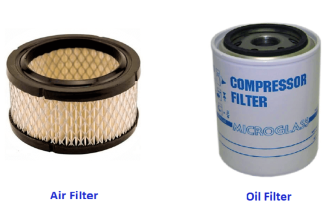Doppler and transit time are two very popular types of flow meters for non-invasive measurement of flow in full pipes.
These technologies are often confused because they are both ultrasonic, and both measure flow by using sensors clamped onto the outside of a pipe.
Transit-time Ultrasonic Flow Meters
They actually work best in opposite applications and successful installation depends on understanding the differences and making the right choice.
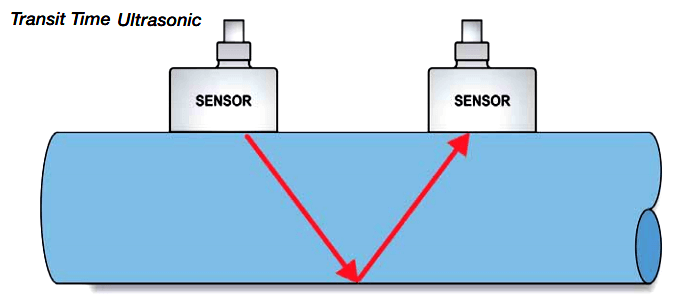
Principle of Transit-time Flow Meters
The transit time flow meter utilizes two transducers that function as both ultrasonic transmitters and receivers. The transducers are clamped on the outside of a closed pipe at a specific distance from each other.
The transducers can be mounted in the V-method in which case the ultra sound transverses the pipe twice, or W-method in which case the ultra sound transverses the pipe four times, or in the Z-method in which case the transducers are mounted on opposite sides of the pipe and the ultra sound transverses the pipe only once.
The selection of the mounting method depends on pipe and liquid characteristics. When the flow meter works, two transducers transmit and receive the ultrasonic signal which travels firstly downstream and then travels upstream. Because ultrasound travels faster downstream than upstream, there will be a difference in time of flight (Δt).
When the flow is still, the time difference(Δt) is zero. Therefore, as long as we know the time of flight both downstream and upstream, we can work out the time difference, and then the flow velocity (V) and flow volume (Q).
Advantages of Transit-time Ultrasonic Flow Meters
- No Moving Parts.
- External Clamp-On, no need to cut into the lines or shut the process down to install.
- High Accuracy, 1% of reading.
- Very sensitive to low flow measurement.
- Field Programmable can be used on pipes from 1″ up to 200″.
- Digital Signals will NOT Drift.
- Measures virtually ANY liquid that is sonically conductive.
Disadvantages of Transit-time Ultrasonic Flow Meters
- Requires full pipe.
- Old or corroded pipes may impede the acoustic signal.
- Too much aeration or turbulence can destroy the signal.
- Doppler Flow Meter
Applications of Transit-time Ultrasonic Flow Meters
- Water (hot water, cooling water, potable water, sea water etc.)
- Petroleum products
- Chemicals, including alcohol, acids, etc
- HVAC, energy measurement system
- Beverage, food, and pharmaceutical processors
- Secondary sewage, waste treatment, etc.
- Power plants (nuclear power plants, thermal & hydropower plants), heat energy boiler feed water.
- Metallurgy and mining applications
- Pipeline leak detection, inspection, tracking, and collection
Doppler Ultrasonic Flow Meter
The flow meter operates by transmitting an ultrasonic sound from its transmitting transducer, the sound will be reflected by useful sonic reflectors suspended within the liquid and recorded by the receiving transducer.
If the sonic reflectors are moving within the sound transmission path, sound waves will be reflected at a frequency shifted (Doppler frequency) from the transmitted frequency.

Principle of Doppler Flow Meter
The shift in frequency will be directly related to the speed of the moving particle or bubble. This shift in frequency is interpreted by the instrument and converted to various user-defined measuring units.
There must be some particles large enough to cause longitudinal reflection – particles larger than 100 microns.
When installing the transducers, the installation location must have enough straight pipe length upstream and downstream. Commonly, the upstream needs 10D, and the downstream needs 5D straight pipe length, where D is pipe diameter.
The Doppler ultrasonic flow meter is designed to measure the volumetric flow of liquid within the closed conduit, the pipeline must be full of liquids, and there must be a certain amount of air bubbles or suspended solids in the liquid.
Transducers are clamp-on or hot-tapped insertion types, user don’t need to shut down the pipe flow when installing transducers.
Advantages of Doppler Ultrasonic Flow Meter
- Doppler meters may be used where other meters don’t work. This might be liquid slurries, aerated liquids or liquids with some small or large amount on suspended solids.
- Obstruct less flow
- Can be installed outside the pipes
- The pressure drop is equal to the equivalent length of a straight pipe
- Low flow cut-off
- Corrosion resistant
- Relative low power consumption
Disadvantages of Doppler Ultrasonic Flow Meter
- Can’t measure the clean liquid.
- Unsuitable for highly accurate measurement applications.
Applications of Doppler Ultrasonic Flow Meter
- Raw sewage
- Activated sludge
- Ground water
- Pulp and paper slurries
- Chemical slurries
- Drainage
- Mining recirculation
If you liked this article, then please subscribe to our YouTube Channel for Instrumentation, Electrical, PLC, and SCADA video tutorials.
You can also follow us on Facebook and Twitter to receive daily updates.
Read Next:
- Multi-phase Flow Meter
- Flow Meters Grounding
- What is a Piston Flow Meter
- Flow Meter Accuracy
- DP Flow Meters Principle
